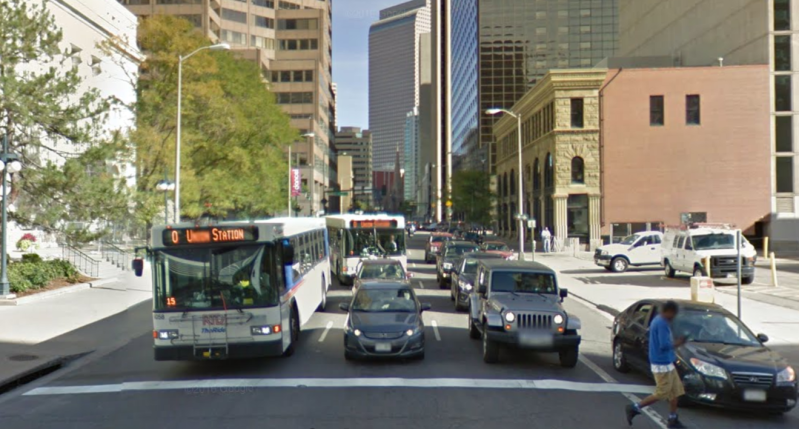Work Downtown? Take the 2017 Commuter Survey to Make Your Voice Heard

Commuting accounts for a small portion of trips around the United States — just 15 percent. So Denver’s transportation system has to do more than get people to and from work if the city is going to beat its car addiction.
Still, the Downtown Denver Partnership’s annual commuter survey is a good tool to measure the city’s most consistent trips, the ones heading in and out of our densest jobs center each morning and evening. The 2017 survey is here, so take a few minutes to fill it out.
DDP Director of Downtown Environment Aylene McCallum walks from the Civic Center RTD station to her office every day, and says she sees an uptick in people biking on the 14th and 15th Street protected bike lanes. “In general I feel like I see [biking] a lot more,” she said. “I’m hoping that that anecdotal feeling is reflected in an increase in bicycling in downtown.”
Last year’s survey tallied more than 7,500 responses and revealed cringe-worthy truths, like the fact that solo car commuters outnumber transit riders in Denver’s most walkable, bikeable, and transit-rich area. And that transit is more appealing for suburbanites than city dwellers because of a rapid regional rail system. Closer in, Denverites grapple with infrequent buses slowed by lanes that don’t separate buses from car traffic.
“I hope that the trajectory changes,” McCallum said. “Certainly we want more people using alternative modes… Those numbers are a little harder to guess from an anecdotal perspective.”
These aren’t fixed demographics to shrug at — they’re red flags to wave in the face of the Hancock administration, the Denver City Council, RTD, and downtown businesses, who hold the keys to more accessible sustainable transportation options.
For example, we know from these surveys that driving solo — the most inefficient, traffic-inducing means of getting from A to B — is too attractive. Aside from city-owned on-street parking priced way below the market rate, businesses incentivize their employees to drive.
In 2016, downtown employees who got parking passes from their employers were 88 percent more likely to drive alone and 44 percent less likely to use transit. When companies paid for transit passes, their employees were 67 percent more likely to ride the bus or train, and 28 percent less likely to drive alone.
Mayor Michael Hancock’s Department of Public Works can help RTD move buses through the city faster and more frequently with more bus-only lanes (like the ones on Broadway and Lincoln) and by buying bus service to realize its transit goals. The city could raise parking meter fees to align with demand, and put that money into sustainable transport projects and incentives. And RTD can use these results to shape the overhaul of its pass program.
But decision makers need data to back these ideas up, so head over to DDP’s website and spend a few minutes sharing your commuting experience.


